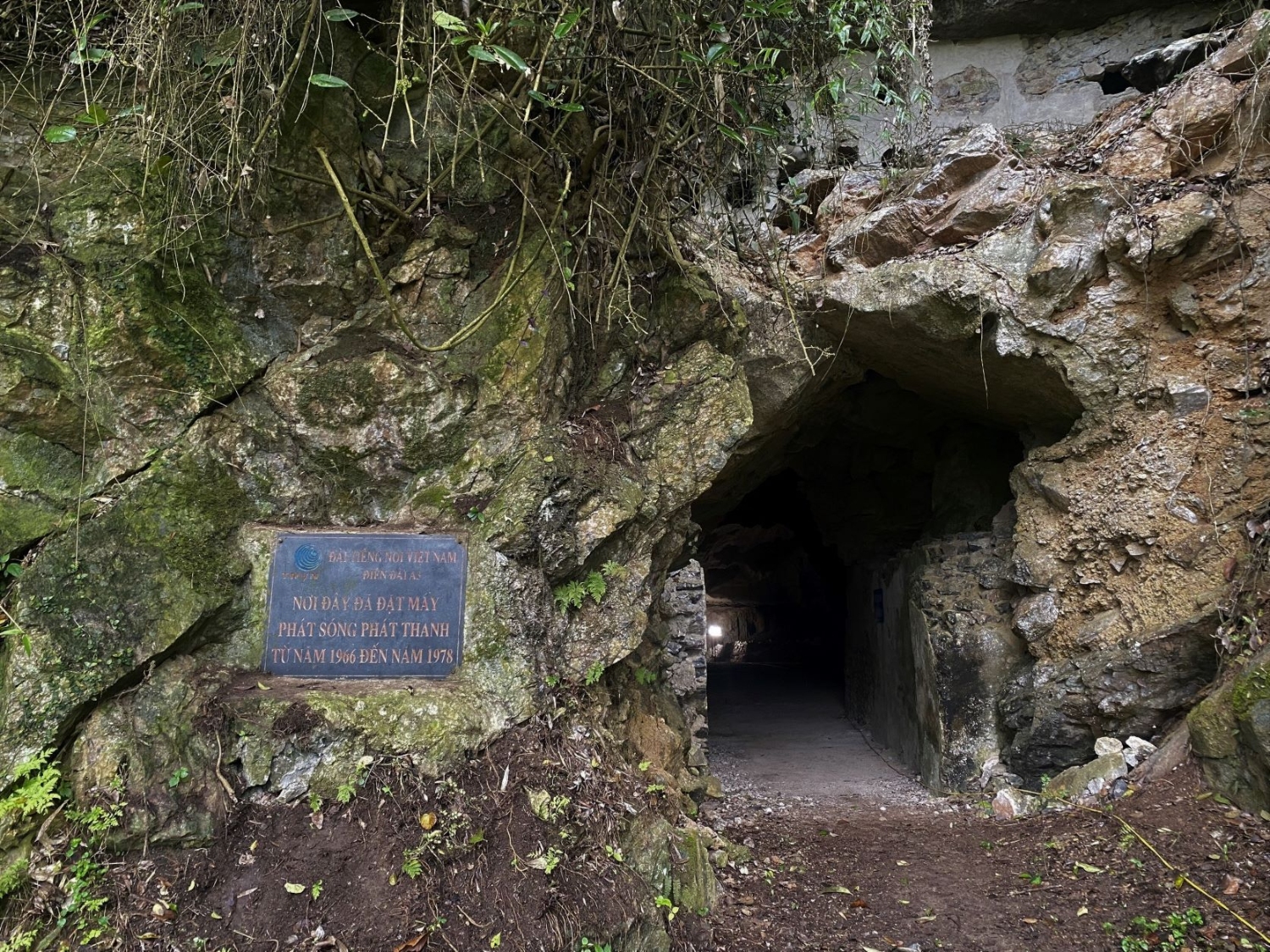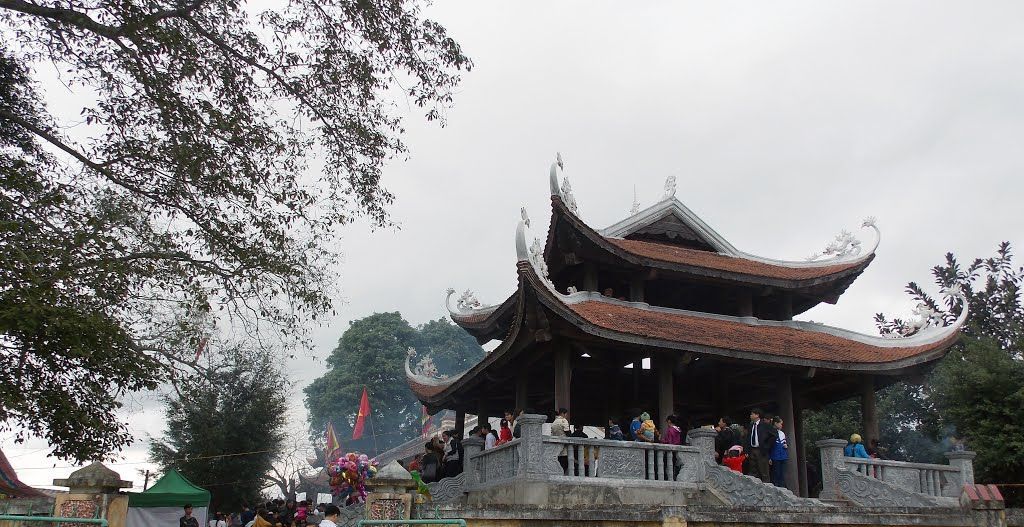Relic point Vietnam
Việt NamHistorical relic site of the Voice of Vietnam at Nguom Chieng cave
Location of the Voice of Vietnam at Nguom Chieng cave (1966 - 1978), in Trung Khanh town, Cao Bang province. Nguom Chieng Cave, with its rugged terrain and solid terrain, was chosen as the place to set up a backup station of the Voice of Vietnam (called Dien Radio A3). The A3 radio broadcasting station was the evacuation site of the Voice of Vietnam during the resistance war against the US invasion from 1966 to 1978. This is one of the important "bases" responsible for relaying and broadcasting. broadcasting to Finland and Northern European countries, contributing to ensuring that the Voice of Vietnam's broadcast is maintained and smoothly, transmitting the voice of the Party and Government, the voice of the Vietnamese people steadfastly. strong and proud on the front line against America, winning independence and freedom for the Fatherland. Over 10 years of operation (from the first day of broadcasting on April 24, 1966 to 1978), Radio A3 has successfully completed its historical mission, marking many memories of the arduous period of resistance against the US to save the country. magnanimity, especially of radio people with their bravery and burning revolutionary enthusiasm. At the beginning of construction, Dien Dai A3 was called Site 50. During the two-year construction period, at one point, up to 300 workers had to be mobilized to pave the way and explore the surrounding area to ensure broadcasting. bar as fast as possible. When chosen as the place to set up a backup station for the Voice of Vietnam, Nguom Chieng was expanded into a very wide and deep cave through the mountain. In front of the cave entrance on the left is a solid stone ventilation house. Inside the cave, 3 houses were built to house generators and warehouses. At the end of the cave is also an empty space and finally the path to the back door is built with 124 steps leading out of the cave behind the mountain and is also where the receiver system is located. Standing here, you can observe National Highway 4A leading to Ban Gioc Waterfall and the surrounding area. In addition to the main cave, there is also a secondary cave with a narrower cave to place the dynamo system. In front of the cave is a row of mechanical buildings on the right, further to the left is the security force's house and the cafeteria. All of these rows of houses are built of very solid and sturdy stone. The more flat and empty space in front of the cave entrance is where the transceiver antenna system is located. Over a long period of time with the impact of nature and humans, currently the houses built in Nguom Chieng cave to place transmitters and radio transmitters have been destroyed, leaving only the tiled and marble floors. The foundation system of the house, at the end of the cave, still has 124 steps leading to the back door where the receiver is located. The small cave on the right to place the dynamo system currently still has a cement and stone pedestal and reinforced steel. In front of the cave entrance, the rows of mechanical houses, the security force's house, the cafeteria and the water tank are still intact, currently only the roof is damaged. All rows of houses are built of solid and sturdy cement and stone. The land area to place the antenna columns is currently the rice fields of people in Bo Da hamlet, Trung Khanh town, Trung Khanh district. Nguom Chieng cave relic has an area of protection zone 1 of 6,616.7m2 and protection zone 2 of 42,016.6m2. With the above typical value, the location of the Voice of Vietnam at Nguom Chieng cave (1966 - 1978), was ranked a National Historical Monument by the Minister of Culture, Sports and Tourism on June 29. /2021. Source: Department of Cultural Heritage
Cao Bang 5341 view
Complex of bell relics at Da District Pagoda, Vien Minh Pagoda, Quan Trieu Temple
Da District relic complex includes 3 ranked tangible cultural heritages, which are Vien Minh pagoda, Quan Trieu temple (both ranked as provincial-level cultural and historical relics in 2008) and the pair of "God" bells. Chung" was recognized as a National Treasure in 2016. Da District Pagoda or Vien Minh Pagoda are both the same. Vien Minh is the literal name of the pagoda, and Da Quan is the name of Duke Mac Ngoc Lien - famous general of the Mac Dynasty, in Da Quan village, Xuan Tinh commune, Thanh Lam district, now Hung Dao commune, Cao Bang city. The pagoda dates back to the Ly dynasty, because in the pagoda there are two parallel sentences as follows: "Vien Minh won the reign of the Ly dynasty, Da Quan worshiped the uncle of Hau Le". Roughly translated: Vien Minh relic was built first, during the Ly dynasty. The Da Quy god bell was cast later, during the Le dynasty. These couplets, as their meaning suggests, also reflect folk legends about the history of the temple. The pagoda is a complete complex with unified architecture, starting with a three-entrance gate and ending with a bell tower. The decorative architecture here takes the idea: "the emptiness of form and emptiness of Buddhism is the root". Opposite the pagoda is Quan Trieu temple. Legend has it that Quan Trieu Temple was built during the Ly Dynasty, during the reign of King Ly Anh Tong (1138 - 1175). Over time and due to historical events, the temple was completely abandoned. When the Mac dynasty moved to Cao Bang to establish its capital, it was restored, now only the old foundation remains. According to the Complete History of Dai Viet, the historical figure of the Quan Trieu Temple Cultural and Historical Relic is Duong Tu Minh, a Tay ethnic person, from Ban Danh land, Quan Trieu commune, Phu Luong district (Thai inheritance). Original). Duong Tu Minh was born and raised in a family whose father was a provincial mandarin, leader of a Tay militia team, fought at the Ung Chau battle, the Nhu Nguyet river battle, and was a military officer of the Ly dynasty in Ban Danh land. , Quan Trieu commune, Phu Luong district, now Son Cam commune, Phu Luong district (Thai Nguyen). As a government official, Duong Tu Minh was respected by all people for his integrity and virtue. But after that, the court was in chaos, mandarins abused their power, and Duong Tu Minh was retaliated against by traitors because of his integrity. Duong Tu Minh was exiled by King Anh Tong to the deep forest and toxic water at the foot of Duom Mountain, Phu Luong district. The heroic general of the past became "the old man of Duom Mountain", but it was that gentle and simple name along with the feats of the past that forever engraved the heroic reputation of Duong Tu Minh in history. Vien Minh Pagoda is one of the three oldest pagodas in the province, its long historical value is engraved in the pair of bells present here. In 1993, this pair of bells had sculptural artistic value. With unique values, in 2016, the pair of bells was recognized by the Prime Minister as a National Treasure. The big bell is 1.75 m high, the mouth is 1.07 m wide; The small bell is 1.55 m high and the mouth is 0.95 m wide. Both are cast from copper alloy, which over time has turned to cast iron color. The bell of Vien Minh Pagoda is one of the few legacies of the Mac Dynasty remaining in this border land. The Da District relic complex, Quan Trieu Temple, where the pair of ancient bells recognized as National Treasures is kept, has great historical and cultural value. Source: Cao Bang Electronic Newspaper
Cao Bang 4309 view



